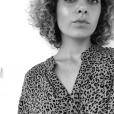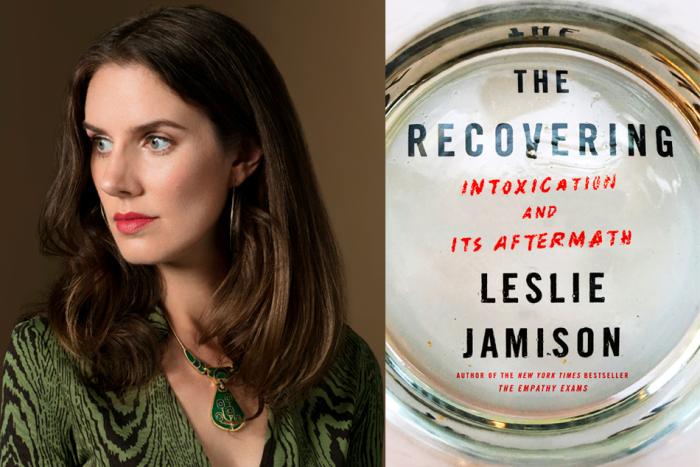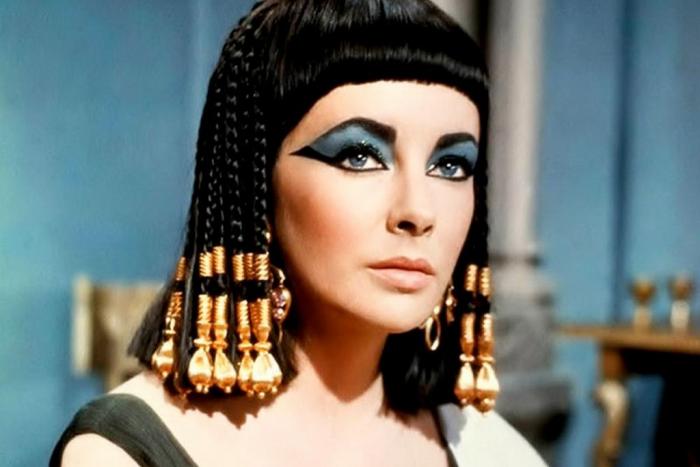“Colonialism is neither created nor destroyed, only transformed. Or inebriated.”
-Andrés Neuman, How to Travel Without Seeing: Dispatches From the New Latin America
The trees don’t lie. You can see in their wear, their violent bends, that they’ve been through hell. Abandoned buildings and storefronts don’t lie, either, but those have dotted the urban landscape of the San Juan metro area for as long as I’ve been traveling to the island of Puerto Rico. The graffiti, ever-topical, calls out the gringo colonizers who’ve left the island without the money or infrastructure to cope with destruction: “El Desastre Es La Colonia.” “FEMA Es El Problema.” Where’s the lie?
Since Hurricane Maria hit on September 20, 2017, there’s been what the media has described as “an exodus” from the island, with many making new homes in Florida. About 5 million Puerto Ricans are living on the mainland now—more than who live on the island itself. The electric company will be privatized, while still a third of the island exists in the dark. An ongoing economic crisis will see further austerity measures put in place in order to pay down a massive debt, perhaps increasing unemployment with cuts to government jobs; that plan would have to be approved by a government control board of U.S. Congress members thanks to an act called PROMESA, which was signed into law by President Obama in 2016 and further decimated the island’s ability to self-govern. FEMA, el problema, has declared their job done. Chef José Andrés, who’s been feeding thousands for months through his nonprofit World Central Kitchen, has been all but canonized as a saint for not abandoning the U.S. colony like the federal government. The decimated agriculture is being slowly restored thanks to the work of activists.
It’s my sixth trip here in two and a half years, and first since the storm. The scenery has, in the past, been incidental. As a food writer, I’m always focused on my plate and my glass, on having a good time, chatting with bartenders and chefs who have become friends and reporting back.
While that’s always been complicated, it feels both strange and more necessary this time around: The bad press makes me want to give the island peace, more time to recover; at the same time I know there must be more to what’s happening than that bad press.
Bars are little pockets of humanity, where we go to relax and shoot the shit. In bars, we meet friends and strangers. We tell our life stories, over and over. Like trees and vacancies and graffiti artists, they tell the truth of how it’s all going.
*
My trips began in 2015, when the piña colada changed my life. I’d been to the island before on vacation, and as a kid I’d march across my grandmother’s front lawn waving her Puerto Rican flag out of some ingrained revolutionary spirit. I was comfortable making this the place where I tried to start off on a new path.
I tell new friends the story all the time, usually while giving a rundown of my tattoos as we sit next to each other at a bar; it’s part of my self-mythologizing spiel. We pass from the Jeff Buckley–drawn skull to the outline of an oyster shell to the palm tree, through all the rest of the markings on my arms, and then I motion to my ribs. "There's one on either side," I say, explaining the Spanish fragment from Álvaro Enrigue's short story "On the Death of the Author" before I finally get to the showpiece: a pineapple that stretches over my ribs on the left.
A pineapple tattoo usually means work in the hospitality industry, but for me, it marks a night I spent in Old San Juan on my first cocktail assignment to find out who was ordering piña coladas, a classic drink born there back in the ’50s. “Travel is not transcendence,” wrote Eileen Myles in an essay called “Iceland.” “It’s immanence. It’s trying to be here.” There’s nowhere else I try harder to be present, to be comfortable and act natural, than San Juan. On that trip, with a reporter’s notebook in hand, I learned a little bit about how to do it.
That June night, a Monday, I drank three piña coladas, as though on some holy quest, and did end up born into a new life—of cocktail writing, of a belief in the truth-telling of bars, and of a richer relationship to the island where my grandmother was born. There was so much openness, with Americans and Puerto Ricans and anyone else coming together to create one big party, and I let myself melt into it.
That night, I did something for the first time that would become a habit: got to a bar right when it opened, choosing a stool all the way at the end. A ponytailed barman named Mario greeted me at La Factoria; he asked if I liked mezcal, and I lied with an affirmative nod. He made me a pink drink in a coupe glass and told me it was called the Beauty and the Beet; in it, earth and smoke worked together, and mezcal became new habit number two.
Throughout that first night of habit-making, I was introduced to more people as the bar filled up: more bartenders, one of the owners, the famous cocktail writer Dave Wondrich who was in town for a rum event. I drank a take on the piña colada and talked to everyone who would let me about its history and its present. They told me you’d usually drink them on the beach, from plastic cups. They made me different rum cocktails, ones that played bitter and sweet off each other. There were shots, I think—the memories are fuzzy. I told a newlywed couple that I was a writer, a half-truth at the time, to try it on for size. A photographer sat at the bar with his wife, there on a honeymoon too, and we still follow each other on Instagram, sharing our lives with each other based on that one night.
When I finally made my way to the exit, much drunker than I’d arrived, a mysterious man loomed over me and said, "Tell these fuckers that they did a paternity test on the piña colada and it was made with Don Q rum at the Caribe Hilton." A holy quest, indeed.
In the morning, I woke up puffy-faced and hungover, baptized by rum into this new beat, and rolled right onto my computer to pound out 1,200 words on my adventure. A month later, I quit a job I’d hated for six years, convinced by the night’s success that I could be a freelance writer.
I had avoided letting anyone in Puerto Rico know that I have even the smallest ancestral connection to the island until a few trips in, when I flew down with a broken foot stuck in a big, stinky recovery boot. I sat at the end of Jungle Bird’s bar, drinking whatever was cheerfully served to me, and finally someone asked, head tilted: “Are you Latin?” And I did what I always do when confronted with that question: Take a deep breath and say, “Well…” before explaining that, yes, I am, a little bit, but also no. Mainly no. I have no claim here. I’m a writer but also a tourist, and tourism “seems both to reverse colonialism and to repeat it,” as Rebecca Solnit wrote in A Book of Migrations, a memoir of her Irish-American ancestry.
Travel writing often feels quite close to colonialism. You’re making a profit off the stories of others, off a place you can never really know as a home. But I try to let the deep questions go while I’m there, where I’ve found friends to whom I owe a life I wouldn’t have been able to live without their stories. I try to focus on the food and the truth.
*
Old San Juan’s cobblestone streets, usually packed with stumbling tourists, seem empty on this Tuesday night. A friend asks how the city appears to me now and I immediately say, “Weird.” Everything is getting back to normal, he says, except that a lot of his friends are no longer home. They’ve left for the States to find work.
Usually, I’d begin an evening at the historic dive bar El Batey with a Jameson and soda, but they’re no longer open every day. The sight of the locked door that would usually be open from 1 p.m. until 5 in the morning is disconcerting.
Instead, I sit down at La Taberna Lupulo, a packed beer bar, and order a local IPA from a bartender I’d featured in a piece last year. She comes out from behind the bar to give me a hug before quickly moving back to the work of pouring and closing tabs. The energy here, despite the emptier streets, feels as it always has. When my pint glass is empty, it’s time to go to La Factoria.
When I enter, every stool is taken—a good sign. Eventually, I’m introduced by the bartender to his friend as a big fan of the band INXS. Eventually, I make the acquaintance of a sad salsa DJ who’s just returned from New York; he has an Alkaline Trio tattoo on his forearm but has been pigeonholed into one genre. I try to leave at three a.m. and am told, “No, it’s just getting started!” I’m served, as usual, two more drinks than I should consume in one night. The door has to be unlocked when I finally stumble out, a bit past four.
I wake up the next day, puffy-faced and hungover, more at ease.
The feeling that things are amiss remains, though, because they are; outside the city limits, most of the island is without power, clean water, or internet. San Juan is a bubble, stretched.
For a hangover lunch, I go to Comedería La Fonda Urbana, which was called La Jaquita Baya on my last trip. The waitress laughs at me when I’m left speechless at the news that there are no tostones. I should know better: Plantains are no longer abundant.
Later that night, while sitting at the bar of my friend Maria’s restaurant Gallo Negro, the same waitress greets me. This time, she’s wearing dark lipstick to suit the sultry atmosphere, and the reality of how few people there are becomes glaringly obvious. What was once a small city feels now like a small town, where the only people left know everyone else.
On the penultimate day of the trip, the drinking begins, in an unintentionally perfect way, at La Penúltima. The bartender knows immediately that I’m from New York, though we’ve never been introduced. She just moved back after spending a decade in the city, working in some prestigious bars. When she offers me a shot of Fernet as I’m about to leave and sends me off to the next bar with a Last Word in a plastic cup—a “boomerang,” a gift for the bartender—there’s that sense of home, which comes full circle as I take a seat at Jungle Bird once again, this time to eat food cooked by my friend Paxx. I’ve seen them cooking at four spots now, each time better than the last, each time closer to creating a cuisine all their own. The waitress from the day before walks in as a guest. “Hello, I’ll be your server,” she jokes. “Tomorrow, I’ll be with you on the plane.”
The bar’s abbreviated tropical menu has a drink named Category 5. They’re out of the ingredients they need to make it. I order, instead, a piña colada.
*
Back in Brooklyn, I make my way over to a pop-up called El Puente in Carroll Gardens, where I’m greeted from behind the bar by Mario’s familiar grin. “Pirate!” he says, before coming out to hug me—a nod to my Instagram handle, itself an ode to my love of rum and habit of going to the Caribbean to pillage for stories.
We catch up from my customary seat at the end of the bar. The pop-up serves as a drop-off point for supplies being sent back to Puerto Rico: They need water filters; they don’t need any more clothes. He’s cut his hair short and is getting used to the cold. The wall behind my back was painted various candy-color shades in homage to Old San Juan’s bright buildings.
A friend comes in and takes a seat next to me; he orders a piña colada, but the moment doesn’t feel right. I wish this bar weren’t here; I wish there were no reason to have fund-raisers for Puerto Rico and that the lights were always on everywhere and there weren’t crypto-currency billionaires attempting a new breed of colonialism. New York’s February cold is no place for tropical joy, the kind that changes your life and makes you feel like you could do anything. Piña coladas belong to Puerto Rico, the world’s oldest colony that deserves so much more. But this is reality.
I spend a long time looking over the menu before Mario tells me he knows what he’ll make me. “Something called the Beauty and the Beet.” The recipe has changed, he says, as he places it in front of me in a highball glass. Like everything else.
Some changes, though, are only temporary. A few weeks later, Mario has closed up El Puente. He’s gone back to San Juan’s warmer weather to work at El Batey. Now I know it will be open on my next trip—for storytelling, for whiskey, for The Police playing on the jukebox. If the trees are still bent, the graffiti gets angrier, and some buildings are left vacant, the bars will be there to welcome you with open arms—with shots of rum, with life-changing piña coladas.






